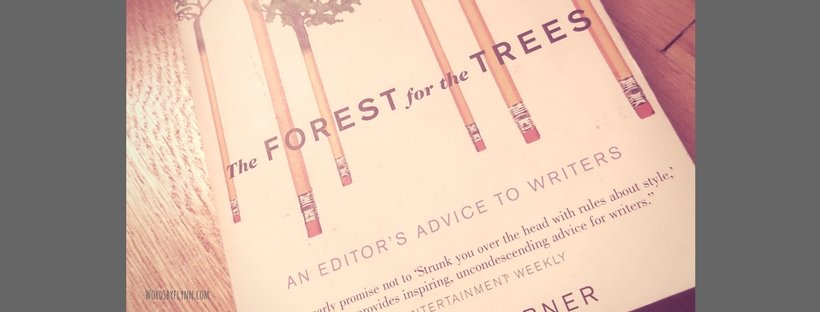Write Reads 2: Forest for the Trees
Hello writers, I wanted to start the Write Reads series this year with Betsy Lerner’s “Forest for the Trees.” I am hoping to bring these writing book reviews to my site to serve as a guide to pick up something you may want to read, or not read. Enjoy! Please note, I will be paraphrasing anything from the book or it will be italicized and in quotes. If it’s long, I’ll put ellipses in them. Don’t worry, I will be leaving chapter and page numbers if you decide to pick this book up.
Here’s some quick book information:
Betsy Lerner, “Forest for the Trees”
Riverhead Books (Penguin Group), publisher.
Revised and updated edition, October 2010.
12 Chapters; 285 pages total; Pages include introduction that starts at page 1 and a bibliography that starts at 279.
The book is broken up into two parts; First part is Writing and the second is Publishing.
After thoughts…
I was first assigned to read this book for my editing and publishing course that I took in my last semester of college — I was able to get through a big chunk of part 2 for an assignment. About a couple of years ago, I decided I wanted to pick it back up again for the sake of understanding the publishing industry and see what I could do in bettering my craft. Though it offers some quick tips on writing, it does not make up entire chapters. And like the subtitle says: "An editor’s advice to writers."At the end of reading this, I felt like I had an idea of what publishing industry is about; it's as recent as 2010, but it’s still information that's good to have.Recently, I’ve been reviewing the some of the lines that I’ve highlighted. Some of these have grounded me in a way, serving as something to keep in mind now and for the future.
Most notes from…
Part 1 Writing:
Chapter 1, “The Ambivalent Writer.” Page 1. /// 9 notes. Why: In the beginning of the book it talks about different types of writers; besides ambivalent and neurotic (below), there are the natural, wicked child, self-promoter and “Touching Fire" types. While each chapter (writer types) had parts that I could identify with, this chapter stood out to me because Lerner describes this writer as the one who bounces around between a multitude of ideas. Yes, as writers we all bounce around with them, but this is more like the writer who can’t choose which one to work on and haven’t finished a story.While I have grown a bit out of that, it was definitely me in the beginning. I would not finish a fan fiction (I do have plans to finish my Teen Wolf fic, but I digress) or start a story get about halfway through. This chapter kind of called me out on my flakey ways when it came to writing. In turn, it's made even more determined to complete whatever I'm working on.
Chapter 5, “The Neurotic.” Page 93. /// 9 notes. Why: Lerner approaches this chapter saying the neurotic writer has a ritual, or habit, that allows them to write in that one condition only. She also addresses those who present “the gamut of phobic behaviors from nervous tics…”.
I believe the point of this chapter is to making sure a writerly habit doesn’t prevent you from producing work if you somehow can’t go through a ritual. Lerner put it best when she wrote: “Should you fail to achieve success, all these behaviors look only like excuses or sick behavior.”
Part 2 Publishing
Chapter 10, “What Authors Want.” Page 211. /// 9 notes. Why: This chapter was more so to understand what writers go through on the other end in the process of becoming published. The approach to this chapter seems as though Lerner is trying to mentor another editor. I believe it offers a perspective for writers of what other writers want, what a relationship could be like between them and an editor, and more.Chapter 12, “Publication.” Page 255. /// 9 notes. Why: It’s important to understand the process of getting published. This is good chapter for writers who think about going into the industry. Some of the things in this chapter served as reminders.
Most beneficial chapter…
Publishing — Chapter 11, “The Book.” Page 229. Why: When I read this chapter, I highlighted the crap out of it…I had at least 24 four things marked up with my purple-blue highlighter. The chapter basically discusses the process and the decision-making of the book. It also touches on writer careers and how it may take some time to build up an audience.
Honorable mentions…
Chapter 1, “The Ambivalent Writer,” pages 24: “If you’re struggling with what you should be writing, look at your scraps. Encoded there are themes and subjects that you should be grappling with as a writer. If you still can’t figure it out, whatever you do, I beg not to look at the bestseller list.”
Chapter 12, “Publication,” page 276: “Again, Rome was not built in a day.”
Chapter 7, “Making contact: Seeking Agents and Publication,” page 149: “Multiply submit….Make two submissions that are a reach two that are in range and two you would consider ‘safety schools’”
